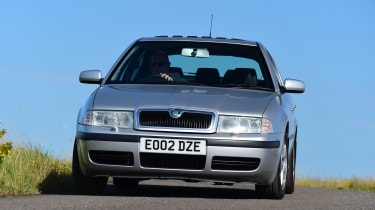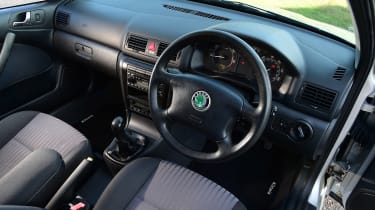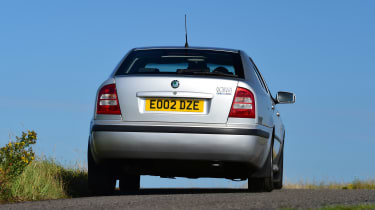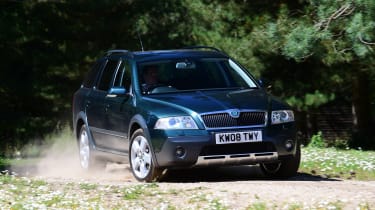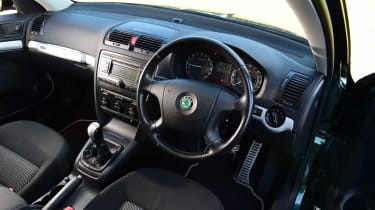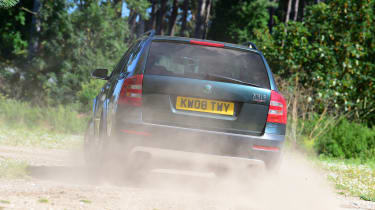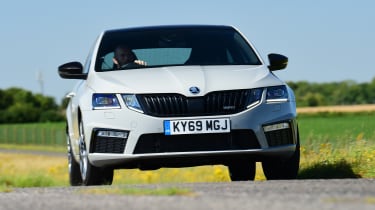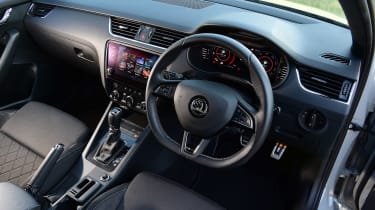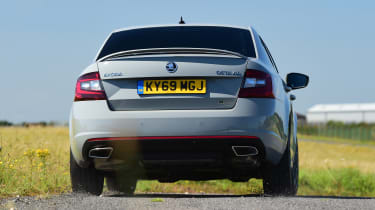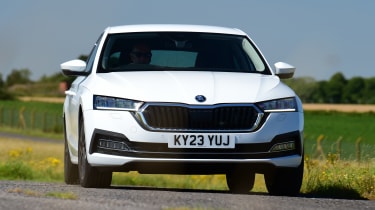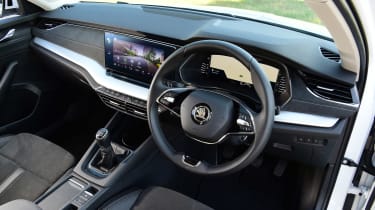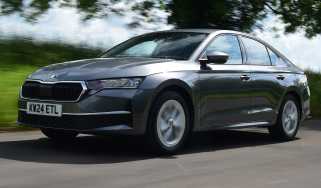Skoda Octavia 25-year mega test: every model driven
The Octavia has been the standard-bearer of Skoda’s renaissance for 25 years. We mark that milestone by looking at four generations of the popular car
Some car manufacturers have a model whose reputation is so strong that it becomes synonymous with the brand. Its abilities come to define what that marque is all about, and it sets the template for every car in the firm’s line-up. Vauxhall has the Astra, and Volkswagen the Golf.
But for Skoda, the Octavia has an even greater meaning. Yes, it’s the brand’s torch-bearer – the car which displays the qualities that help it to stand out amongst its rivals. But it was also the model that marked a rebirth for the Czech company. For years Skoda was viewed as a cheap and not-so-cheerful manufacturer, but following a takeover by the Volkswagen Group, its reputation was transformed.
This year, the Octavia celebrated its 25th birthday of the modern era (pre-Volkswagen ownership, Skoda manufactured an Octavia whose production ran from 1959 to 1971). As of 2022, more than 7.1 million examples have been built. The Octavia’s versatility is one quality that has helped the model prevail so strongly; along with regular hatchback models to compete at the core of the new-car market, the range is boosted by practical estates, rugged 4x4 models, and even the hot vRS options – all of which we’ll explore in more detail over the coming pages.
To celebrate the modern Skoda Octavia’s 25th birthday, we’ve rounded up some of its greatest hits from each of its four generations to see where it has come from and to find out just how far things have progressed over the past quarter of a century – and which qualities have remained consistent throughout the model’s lifetime.
Mk1 Skoda Octavia
In the late nineties, the family-car market was dominated by the brilliant new Ford Focus and the Mk4 Volkswagen Golf – cars which, in both instances, took a quantum leap forward relative to the abilities of their predecessors. The pair set so many standards for the segment that it made direct competition almost impossible. So how was Skoda to stand out in the class with such strong contenders?
There were two areas in which that duo was merely good rather than spectacular, giving an opportunity to capitalise: value for money, and space. With that in mind, Skoda had a very strong base from which to start, because the Octavia would adopt a version of the platform that the Golf (and the posher Audi A3) had already used so effectively.
At 4,507mm, the Octavia was 353mm longer than the Golf, although its wheelbase remained identical, at 2,512mm. It would also share the same basic mechanical layout and engines, however its exterior and interior design was different. The lines, penned by Dirk van Braeckel with the aid of computer-aided design – a first for the marque – kept the prominent grille used on pre-VW Group Skodas, and combined that with softer, more rounded lines. There’s a Germanic quality to the look even today (and especially in the silver finish of the car Skoda has kindly loaned us from its heritage fleet), but it’s not quite as showy as its contemporaries from Volkswagen and Audi.
It really nailed the space angle in the boot, though. The Octavia’s large hatchback opening revealed a volume of 528 litres – almost 200 litres clear of the Golf on which it was based. Rear legroom was merely fine, however, and little different from the Golf.
The Octavia was also the car which displayed the emergence of safety technology to the brand. ABS became a feature on top-spec models, while both front and side airbags were available.
With the new Octavia ready for production, Skoda had already considered where it would be built. The plant at Mladá Boleslav in the Czech Republic received CZK 11billion of investment – the equivalent of just over £1billion today – to accommodate the production numbers expected for the new model. And that proved to be entirely necessary, because from its release in 1996 until it was phased out in 2004, more than 1.4 million units were produced. In addition to the hatchback, that included the Estate, which was the same length overall, although its tall tailgate opened up to reveal a 548-litre load bay.
The car we’re driving here is from 2002, and it’s wearing its near-140,000 miles very well indeed. With examples known to have covered galactic mileages, this one seems barely run-in. There’s still a level of sophistication to the way the Octavia feels on the road that’d make it no hardship whatsoever to live with. It’s not a car that tingles with feedback or precision – it was never meant to – but the controls are light and precise, and visibility is excellent.
Comfort takes a front seat here, and the ride quality is forgiving, so it’s a car that one could happily cover long journeys in – particularly with this car’s frugal engine. That 1.9-litre turbo diesel is one of the clearest indicators of just how far engine technology has come in the intervening 25 years, though. While the fuel has fallen out of favour with many makers, modern equivalents that still exist are becoming smooth enough to be mistaken for petrol units. And that’s something that you could never accuse this 108bhp four-cylinder motor of being.
It’s clattery, noisy, and despite being well maintained, a little smelly, particularly when starting from cold. There’s appreciable turbo lag, too, but the engine still feels pleasingly punchy when the turbocharger eventually kicks in.
The fact that you can pick up an example today for comfortably less than £1,500 makes the first-generation Octavia feel like plenty of car for the cash.
Testers’ notes
“The first Octavia Estate was produced with input from Luc Donckerwolke, famous for designing the Lamborghini Gallardo and Murcielago. More recently, he has penned the Genesis G80 and G90 as Chief Creative Officer of the Hyundai Motor Group.”
- The Mk1 Octavia set the template that Skoda would evolve over four generations to the current Mk4
- Analogue dials and an uncluttered dashboard were hallmarks of the comfortable cabin
- A 1.9-litre turbo diesel engine and the 528-litre boot made the Octavia hatchback an ideal choice on long-distance trips for family-car buyers
Mk2 Skoda Octavia Scout
The 2004 Geneva Motor show was the venue for the release of the second-generation Octavia, and the big stage was fitting for the debut of a model that went on to sell 2.5 million units over its life. The reason why it proved to be so successful was that it maximised many of the original car’s strengths, yet moved the game well into the next millennium.
Among the improvements were a host of design refinements on the outside. The front bumper was neatly integrated into the sleek nose design and the radiator grille had a more modern trapezoidal shape. Smaller details, such as the indicator side repeaters now integrated into the door mirrors, cleaned up the car’s profile and added a hint of sophistication.
From a technical point of view, the Octavia grew slightly in each direction. Its increased overall length paid dividends in the second row, where kneeroom improved dramatically, while the body itself became more robust, using a heavily re-engineered version of the outgoing car’s platform.
Up front, the cabin felt a little more substantial than the Mk1’s. The centre console was a little wider and more prominent, while a slim piece of silver plastic trim continued into the door panels for a more cohesive, modern look. In the case of this Scout version, it also had a chunky passenger grab handle.
The Scout was introduced to the Octavia family in the second generation, combining the practicality of the estate body with some genuine potential for off-road ability. Scout models gained 40mm of ride height, plus a four-wheel drive system. A computer could send drive to the rear wheels when slip was detected at the front, and then disconnect drive to the back again to improve fuel efficiency. The Scout version offered a degree of off-road potential that many models in the flourishing SUV segment couldn’t compete with.
While we didn’t sample this car in the rough stuff, the chunky body cladding, jacked-up suspension and roof rails help the Scout look the part. The Mk2 feels more grown up with greater surefootedness at all speeds and a little less noise in the cabin. The flip side is that the Scout certainly feels quite heavy, so it’s not quite as much fun through the corners. This version has even more miles under its belt than the Mk1, with the odometer reading almost 140,000.
The 1.9-litre turbocharged diesel engine in this Scout is an evolution of the 1,896cc unit from the Mk1 Octavia mentioned above. With 138bhp, it’s a little more potent here, although that’s offset slightly by the Scout’s four-wheel drive system. Still, the same qualities remain; the engine pulls hard at low revs, so it seems stronger than the bare figures suggest, and it feels like it would barely break into a sweat with a fully loaded car. While improved soundproofing helps boost refinement in the cabin, the turbo-diesel unit still sounds agricultural.
This was the generation where the Octavia became class-leading for space, whether you’re sitting in the back seats or loading up the boot. Rear knee room is very impressive, and the tall roofline in the Scout’s wagon body means headroom is more than fine for six-footers, too. Up to 580 litres of luggage space is available with the rear seats in place, which can increase to as much as 1,620 litres with them folded.
Testers’ notes
“As with the Mk1, the second generation isn’t at a level of rarity or age where it is considered a classic, so examples are a bargain. The cheapest Scout model we found was up for just £1,500.”
- Octavia Scout got SUV-style cladding, roof bars and raised suspension, but also had four-wheel drive fitted to back that up
- Mk2 Octavias had an improved cabin, with the front passenger in Scout models getting a dash-mounted grab handle for use when off road
Mk3 Skoda Octavia vRS
By the time that the Mk3 Octavia arrived, it was clear that Skoda had really settled on a formula. Plenty of changes under the skin were made possible by an all-new platform, and while the ultimate ethos was much the same, the end result was a car that became slightly more competent in every area.
Released in 2012, the Mk3 benefitted from the VW Group’s MQB modular platform that formed the basis of cars as disparate as the VW Touran and the Audi TT. The Octavia was one of the first vehicles to use this tech, and compared with the car it replaced, it allowed for a big boost in strength and lightness. Like-for-like, roughly 100kg was trimmed from the chassis alone compared with its predecessor’s.
This platform also accommodated the ability to install driver-assistance tech. A front-mounted radar allowed the fitment of autonomous emergency braking and adaptive cruise control – both firsts for Skoda. Sitting alongside the radar was a forward- facing camera, which provided data for traffic-sign recognition and lane-keep-assist technology.
The styling evolution is clear to see, and the overall proportions and basic profile remained very similar. But the Jozef Kaba-penned car has lights and a front grille that looked sharper, the creases on the bonnet and the car’s flanks became more strongly defined, while inside, the functional dashboard looked cleaner and benefited from softer plastics.
Five years after its release, the Mk3 was treated to a facelift. These models can be easily singled out from the earlier cars by the distinctive split-headlight arrangement, sitting between a new grille with a smooth centre panel. Mechanically, this variant gained a widened rear axle to improve handling.
This vRS model we’re driving makes its maturity clear from the off. Indeed, if Skoda was still offering this version of the Octavia as a new car today, you wouldn’t feel particularly short-changed. Refinement is impressive, with the noise of bumps and shocks well isolated, while the engine options became more refined, more powerful and – helped by the weight reduction – more efficient, too.
The Skoda’s infotainment screen isn’t as glitzy or as quick-witted as the latest contenders in the segment, but the big, chunky controls and logical layout elsewhere are hard to fault.
Testers’ notes
“The Mk3 model was among the first Skodas to benefit from the ‘Simply Clever’ range of features, which included an ice scraper/magnifying glass inside the fuel-filler flap, a bin for rubbish inside the door pocket, and a parking-ticket holder.”
- Flagship vRS got racy touches such as a flat-bottomed steering wheel and sports seats
Mk4 Skoda Octavia SE L
A new decade ushered in the fourth generation of the Octavia, and it brought along one of the most dramatic changes. The exterior is significantly sleeker, with a wide nose and slim headlights lending the Octavia an appearance that doesn’t look out of place from some more premium brands.
But the biggest step up is inside. The swooping panel across the centre of the dash, housing the large infotainment screen above it with the ventilation and its controls below, looks far more contemporary. New technology for this generation includes a head-up display, while LED lights and cruise control are standard even on the most basic SE trim.
The quality feels fantastic – gone are the days where the Octavia was a budget alternative to its family car rivals. Now, it’s one of the most premium-feeling offerings out there, to the point where it has even surpassed the Golf. As much as the original model was a huge turning point in the brand’s fortunes, the fact that this latest generation of Octavia has enabled Skoda to compete on a level footing with the competition in terms of desirability is an equally ground-breaking step.
But Skoda hasn’t forgotten what made the Octavia so appealing in the first place. Cabin space is simply vast; rear legroom not only has the measure of all of its older relatives, but of its contemporaries, too. The same applies to the boot, which measures 600 litres in hatchback form, or 640 litres in the Estate – two of the largest figures you’ll see in any new car.
With this model sharing its basic underpinnings with the previous car, the improvements – although noticeable – are incremental over its predecessor. Most obvious are the benefits to refinement and stability; this version is the most accomplished here at a high-speed cruise, making it the model we’d pick to while away the motorway miles.
The 1.5-litre turbocharged petrol engine is deeply impressive, too. With 148bhp, performance feels every bit as lively as the 8.2-second 0-62mph time suggests, yet on a long run it’ll happily return economy figures well into the forties. Engine choice is still plentiful; there’s a 1.0-litre petrol engine (available with mild-hybrid tech) that trades a little performance for more efficiency, and diesel fans are catered for with very frugal 2.0-litre options. Company car-friendly plug-in hybrid versions graced the range previously, but these aren’t currently available.
Testers’ notes
“The current-generation model was launched in 2019, but contrary to most traditional reveals, the estate model broke cover before the hatchback.”
- A glossy touchscreen is among the equipment fitted to the Mk4 Octavia, with even entry-level versions getting LED headlights and cruise control
If you fancy a Skoda Octavia as your next car, make sure to read our in-depth review of the current, Mk4 generation...
Recommended
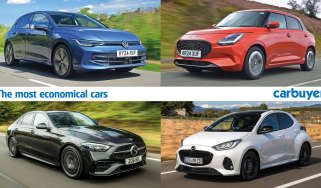
The most economical cars 2025 – petrol, diesel, hybrid and plug-in hybrid
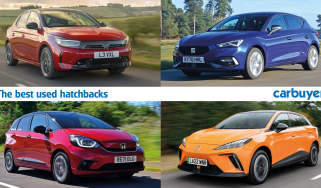
Top 10 used hatchbacks – the best second-hand buys in 2025
Most Popular
Tips & advice

Car dashboard warning lights: what does each symbol mean?

Electric car charging stations: public networks, charger types, apps and maps



